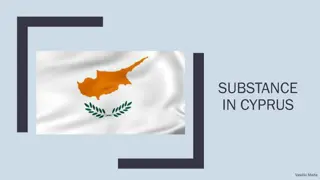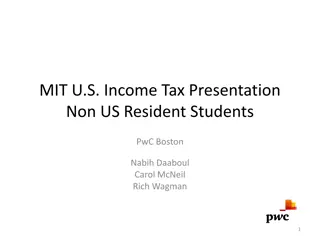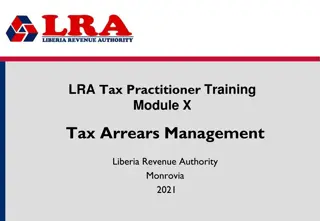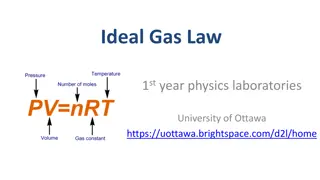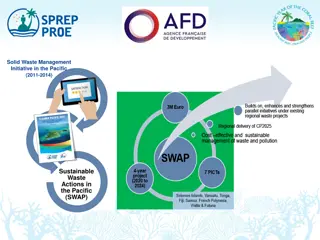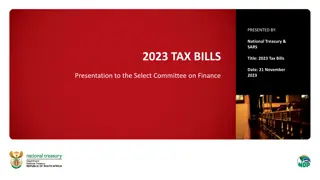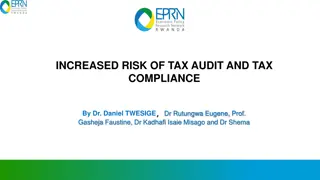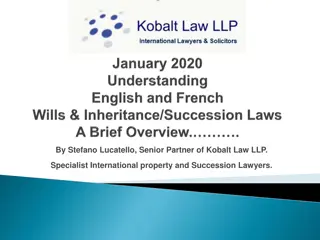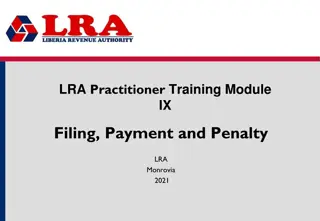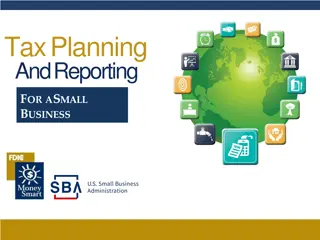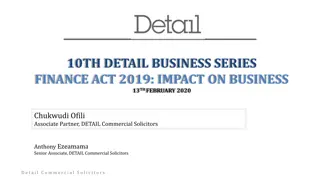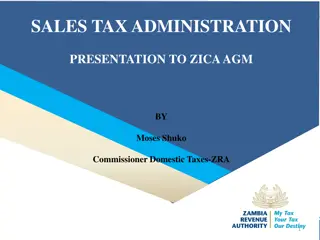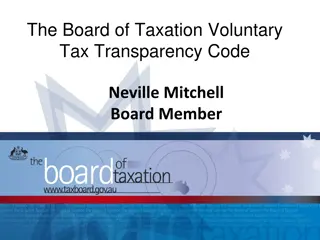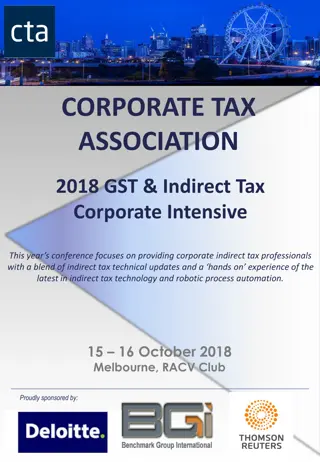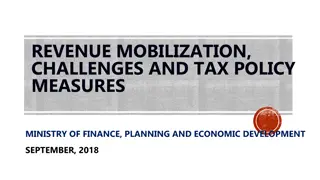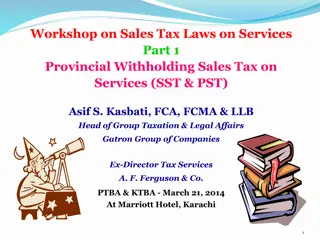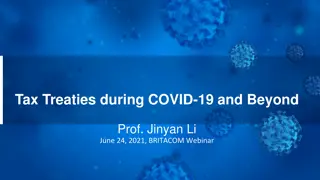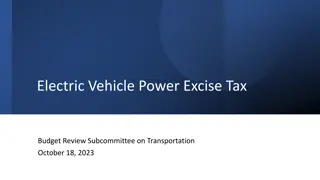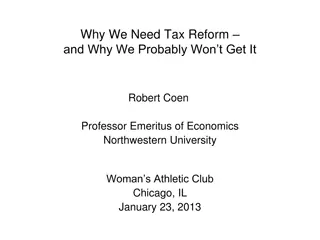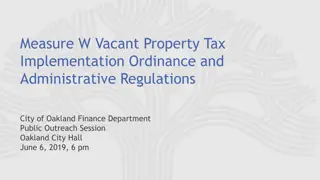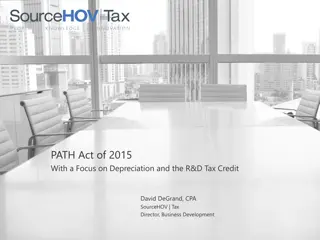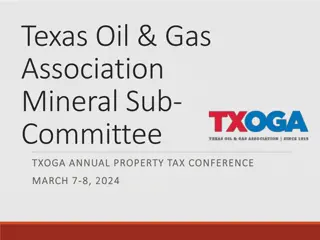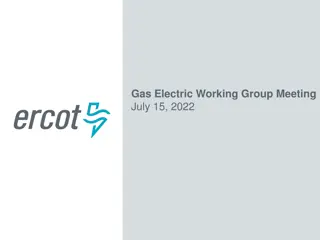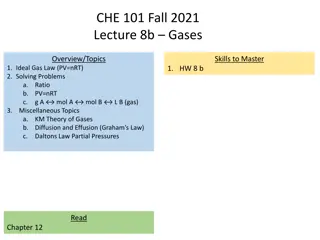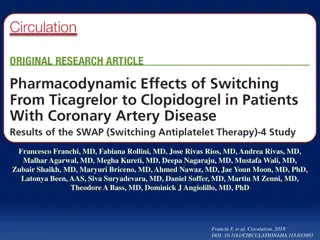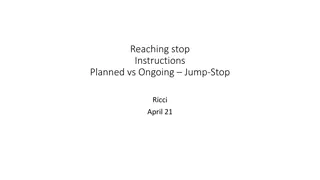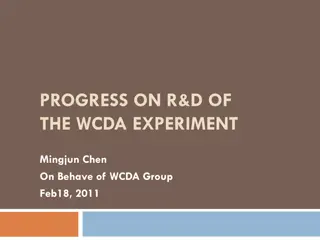The California Gas Tax Swap: Lessons from a Failed Experiment
The California Gas Tax Swap in 2010 aimed to replace the sales tax on motor fuel with a variable excise tax to maintain revenue neutrality. However, the experiment faced challenges due to fiscal emergencies, requiring a supermajority vote for imposing new taxes. This swap, governed by the Board of Equalization, involved a three-step methodology to adjust the excise tax rate annually. Learn from this failed experiment and its implications for transportation funding in California.
Download Presentation

Please find below an Image/Link to download the presentation.
The content on the website is provided AS IS for your information and personal use only. It may not be sold, licensed, or shared on other websites without obtaining consent from the author. Download presentation by click this link. If you encounter any issues during the download, it is possible that the publisher has removed the file from their server.
E N D
Presentation Transcript
The California Gas Tax Swap Learning from a Failed Experiment Martin Wachs Distinguished Professor Emeritus Department of Urban Planning UCLA
Prior to the 2010 Swap State Excise Taxes on Fuel Enacted in 1922 State tax of 18 /gal on gas & 24 /gal on diesel; rate last increased in 1990 Protected for transportation uses by Article XIX of CA Constitution Used mostly for transportation capital; O&M and local return to cities & counties State General Sales Tax on Fuel Since 1971 Transportation Development Act Gasoline previously exempted General sales tax rate was in 2010 7.5% to 9.5% depending on the county Not protected but proceeds from fuel taxation were used to pay off transportation bonds & for state assistance to public transit
Important California Context To impose any new tax requires passage by supermajority of 2/3 of Assembly & Senate Governors Davis & Schwartzenegger declared fiscal emergencies in 2008, 2009, and 2010 as deficits exceed $11b, $24b, and $34b in those years The emergency declaration allowed the sales tax revenue on fuel to be used for other general purposes; reduced an already strained transportation fund; excise tax revenue used for transportation bond payments
The Gas Tax Swap - 2010 Eliminated (unprotected) sales tax on motor fuel and created a (protected) variable excise tax To avoid 2/3 votes, it was intended to be revenue neutral - to produce as much revenue as the sales tax did CA Board of Equalization (elected tax oversight board) revises the excise tax rate (up or down) annually to insure revenue neutrality using data from the CA Department of Finance
Three-step Methodology to Adjust the Variable Gasoline Excise Tax Example from FY 2014-15 Step 1. Forecast Foregone Sales Tax Forecast gallons sold (millions) Price per gallon excluding tax Eliminated Sales Tax Rate Foregone Sales Tax (millions of dollars) (A) 14,151 (B) $3.37 (C) 5% (D) = (A) * (B) * (C) $2,384 Step 2. Calculate Replacement Excise Tax Per Gallon Excise Tax to Offset Foregone Sales Tax (E) = (D) / (A) $0.17 Step 3. True Up: Adjust Excise Based on Previous Revenue Revenue Balance from FY12-13 (millions of dollars) (F) -$188 Per Gallon Surplus Adjusted Excise Rate (G) = (F) / (A) -$0.01 (H) = (E) - (G) $0.18
The Price of Fuel is Volatile & the Excise Tax Rose and then Fell
Revenue from Both Excise Taxes Since Swap $3.5 $3.0 Total Revenue ($ billions) $2.5 $2.0 $1.5 $1.0 $0.5 $0.0 2008-2009 2009-2010 2010-2011 2011-2012 2012-2013 2013-2014 2014-2015 2015-2016 Base Excise Tax Revenue Variable Excise Tax Revenue
Base & Variable Per Gallon Excise Tax $0.25 $0.22 $0.20 Excise Tax Per Gallon $0.17 $0.15 $0.12 $0.10 $0.05 $0.00 2008-2009 2009-2010 2010-2011 2011-2012 2012-2013 2013-2014 2014-2015 2015-2016 Base Excise Tax Rate Variable Excise Tax Rate
Revenue from Diesel Excise Tax Since the Swap $600 $0.20 $0.18 $500 $0.16 $0.14 $400 Revenue ($ millions) $0.12 Tax Rate $300 $0.10 $0.08 $200 $0.06 $0.04 $100 $0.02 $0 $0.00 2008-20092009-20102010-20112011-20122012-20132013-20142014-20152015-2016 Diesel Excise Tax Revenue Diesel Excise Tax Rate
STIP and SHOPP revenues under the gas tax swap. 10.0 9.0 9.0 7.7 8.0 7.0 Revenue ($100,000s) 6.0 5.0 5.1 4.0 3.3 3.0 2.0 2.1 2.5 0.9 1.0 0.0 2010-2011 2011-2012 2012-2013 2013-2014 2014-2015 2015-2016 STIP SHOPP STIP = State Transportation Improvement Program SHOPP = State Highway Operation and Protection Program
Revenue Allocations by Major Program $3,000 $2,500 $185 Revenue ($ millions) $2,000 $679 $89 $1,500 $325 $679 $325 $1,000 $500 $1,015 $992 $0 2014-2015 2015-2016 Debt Service Cities & Counties (44%) STIP (44%) SHOPP (12%)
Eliminated sales tax vs. variable gasoline excise tax revenues. $3.5 $3.0 $2.5 Total Revenue ($ billions) $2.0 $1.5 $1.0 $0.5 $0.0 2010-2011 2011-2012 2012-2013 2013-2014 2014-2015 2015-2016 [Foregone] Gasoline Sales Tax Revenue Variable Gasoline Excise Tax Revenue
Forecast variable gasoline excise tax revenues. $4.0 $3.5 $3.0 Forecast Revenue ($ billions) $2.5 $2.0 $1.5 $1.0 $0.5 $0.0 5-yr Average Price ($3.60) 5-yr Maximum Price ($4.66) 5-yr Minimum price ($2.30) Reduced Consumption at 5-yr Average Price ($3.60)
The Swap is Considered a Failure It did deal with protection for transportation use of fuel tax revenue, but was short-sighted because is did not address the underlying volatility in the revenue stream The state transportation program requires increased revenue as well as stability in the revenue stream
Pending Measures Now Governor s 2016 Special Session of Legislature failed to enact new transportation revenue Both AB 1 and SB 1 now pending propose to: Increase annual vehicle registration fees Charge electric vehicles an extra $165 annual fee Eliminate the Swap and adopt a 17 /gal increase in the excise tax indexed and revised annually CA RC Test in the Field Intent is to adopt a mileage based user fee to succeed the fuel tax within several years
Takeaways Motor fuel taxes can increase revenue in only two ways: If tax per gallon increases If gallons consumed increase Shifting from excise tax per gallon to sales tax did not address this reality and introduced unexpected volatility, was politically expedient but did not address the underlying revenue problem Mileage based user fee also needs to rise over time to insure increased revenue over time
Thank you For More Details see: Anne Brown, Mark Garrett, & Martin Wachs The California Gas Tax Swap, May 2016 http://www.its.ucla.edu/wp- content/uploads/sites/6/2016/08/Gas-Tax-Swap- FINAL-REPORT-052706.pdf The study was supported by the University of California Center on Economic Competitiveness in Transportation (UC CONNECT), the federally funded University Transportation Center for Region IX
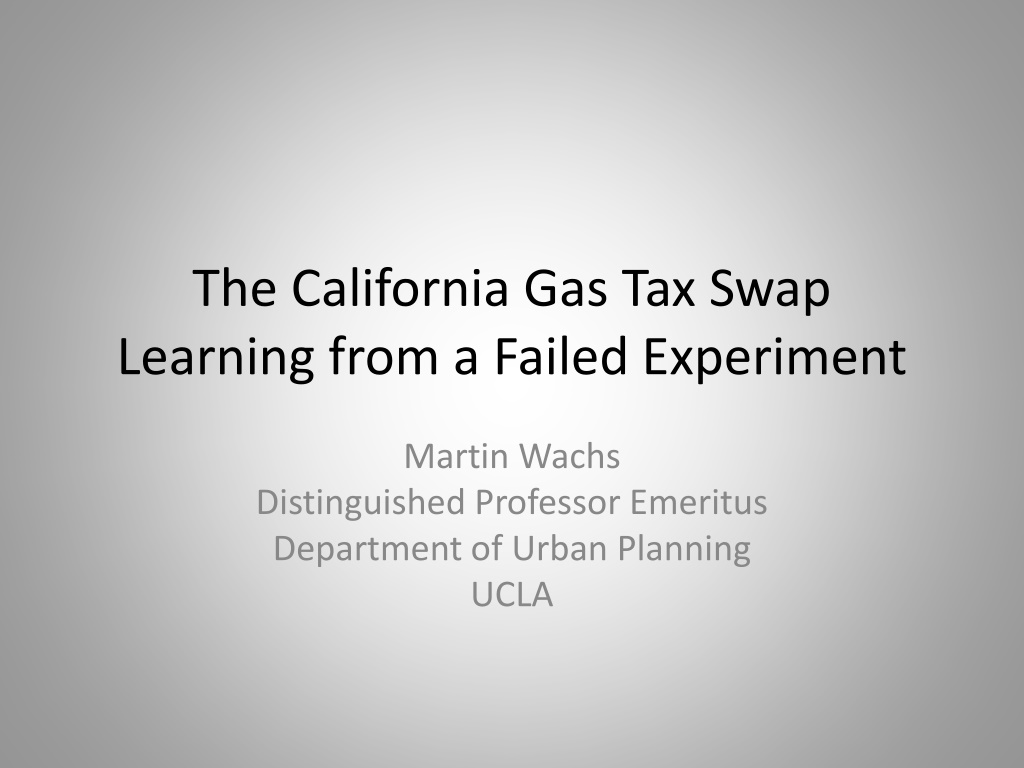


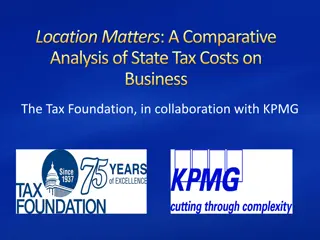

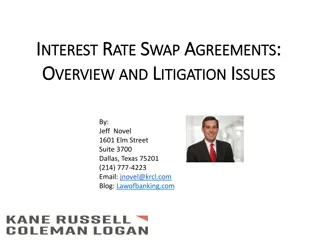
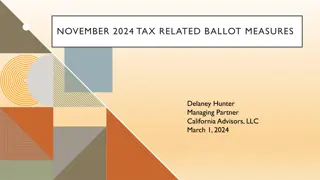
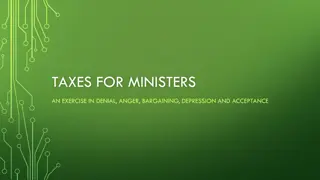
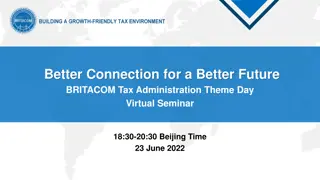
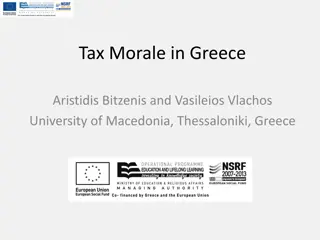
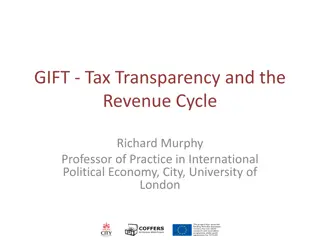


![Town of [Town Name] Real Estate Tax Rates and FY 2024 Budget Summary](/thumb/62211/town-of-town-name-real-estate-tax-rates-and-fy-2024-budget-summary.jpg)
